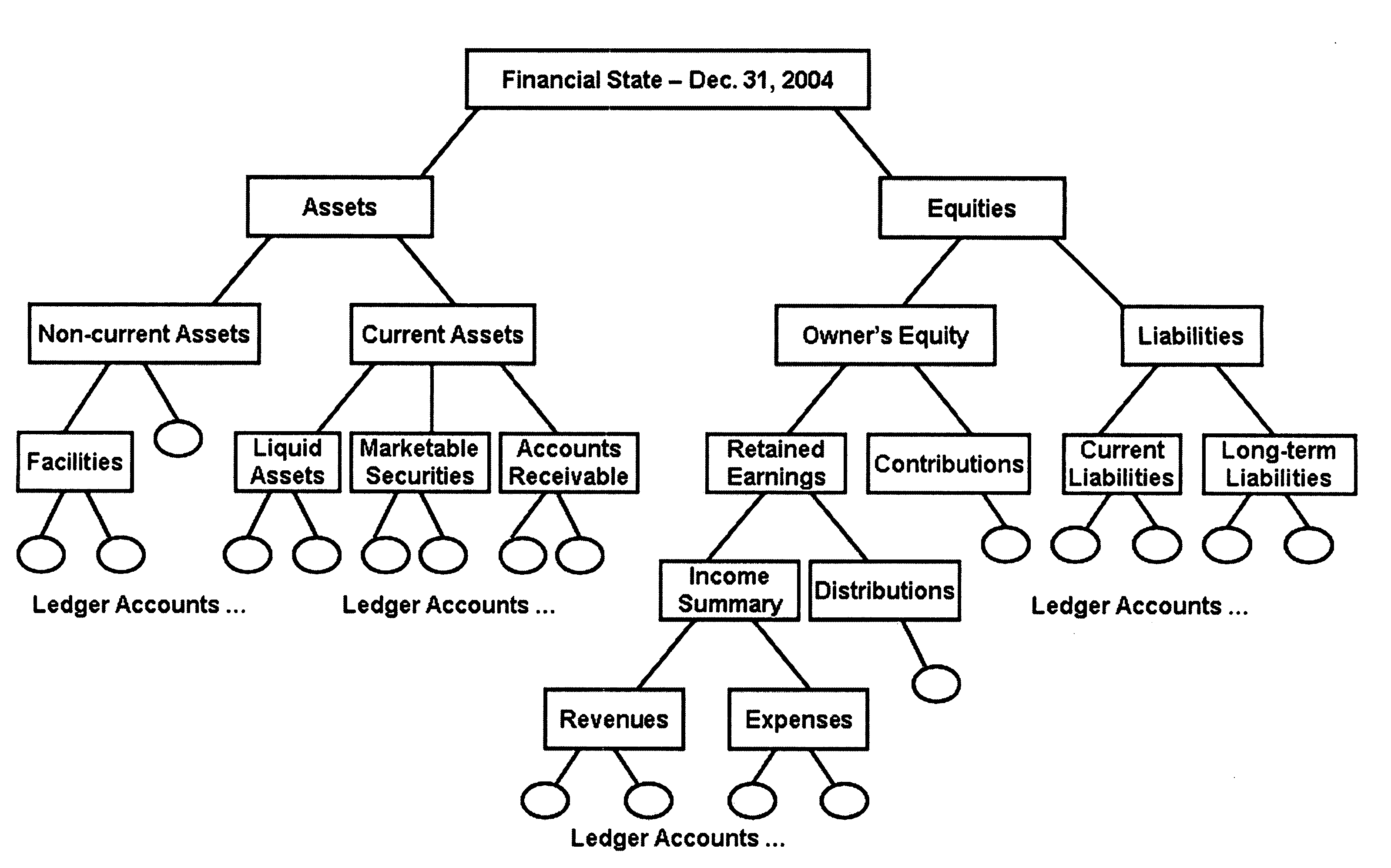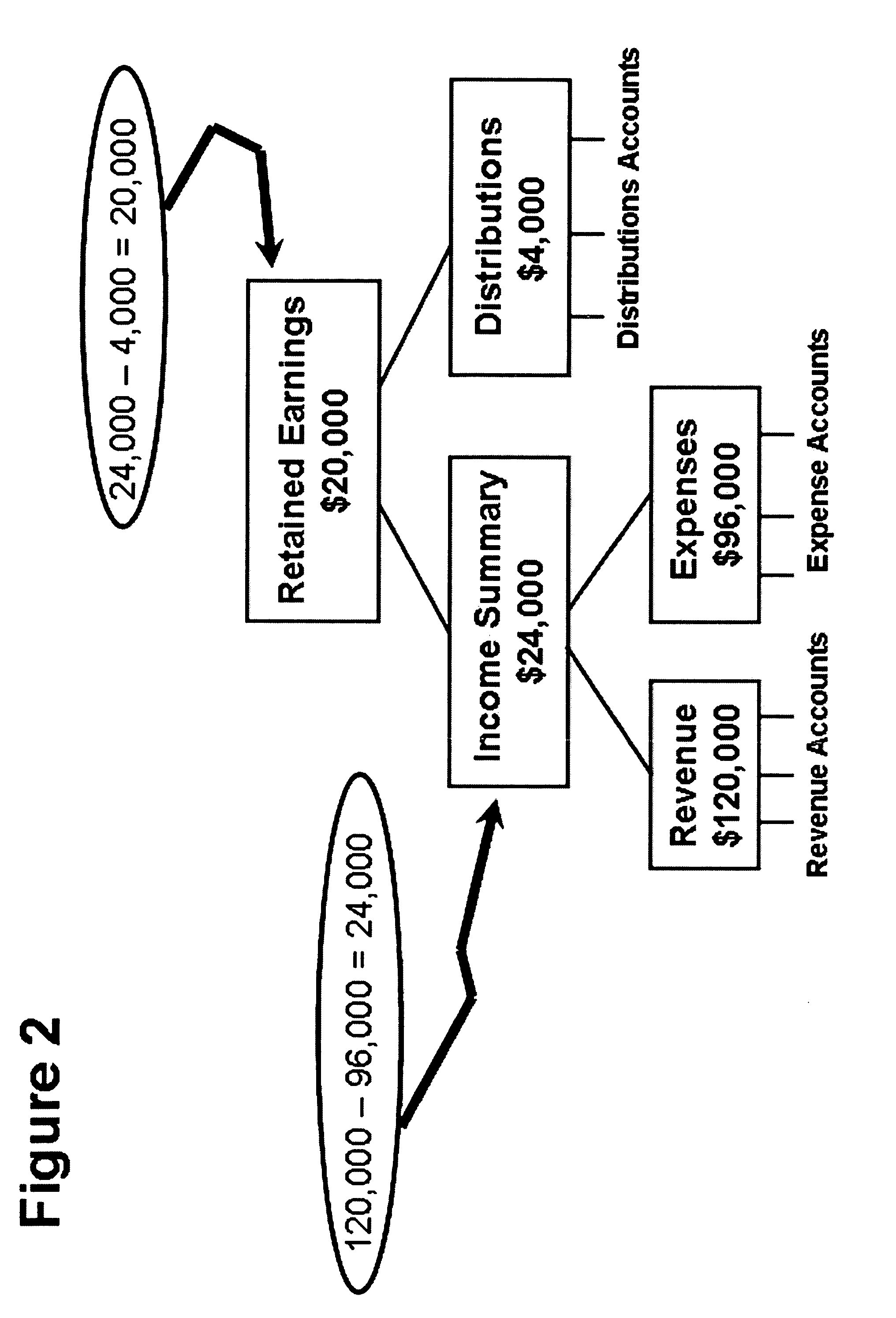Financial analysis tree software engine
a financial analysis and software engine technology, applied in finance, data processing applications, instruments, etc., can solve the problems of limiting the analytical value of accounting information, requiring fragmentation, and no longer serving a useful purpose of maintaining a separate account for a periodic balan
- Summary
- Abstract
- Description
- Claims
- Application Information
AI Technical Summary
Benefits of technology
Problems solved by technology
Method used
Image
Examples
Embodiment Construction
[0083] The preferred embodiment of the present invention is made up of three components; a hierarchical tree data structure, known as a Financial State Tree, that models the financial state of a business at a specific point in time, a second hierarchical tree data structure, known as a Financial Difference Tree, that models the change between two Financial State Trees, and a software engine, the Financial Analysis Tree Engine (“Engine”), that creates and manipulates one or more of these Financial State Trees and Financial Difference Trees based upon user input.
[0084] A preferred embodiment of the Financial State Tree is illustrated in FIG. 1 and the preferred embodiment of the Financial Analysis Tree Engine is shown as flowcharts in FIGS. 5 and 6. FIG. 1 is a data diagram that shows the relationship between the different components of the trees, FIG. 5 is a flowchart that shows how the present invention constructs a tree after receiving a request (with an effective date) by the use...
PUM
 Login to View More
Login to View More Abstract
Description
Claims
Application Information
 Login to View More
Login to View More - R&D
- Intellectual Property
- Life Sciences
- Materials
- Tech Scout
- Unparalleled Data Quality
- Higher Quality Content
- 60% Fewer Hallucinations
Browse by: Latest US Patents, China's latest patents, Technical Efficacy Thesaurus, Application Domain, Technology Topic, Popular Technical Reports.
© 2025 PatSnap. All rights reserved.Legal|Privacy policy|Modern Slavery Act Transparency Statement|Sitemap|About US| Contact US: help@patsnap.com



